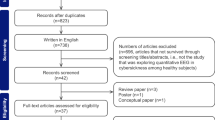Abstract
Physical discomforts, such as sickness, experienced during virtual reality (VR) gaming were analyzed using electroencephalography (EEG). Correlations between the results of a survey on the physical discomforts felt during a head mounted 360° VR gaming and EEGs were analyzed. EEGs were measured using 19 electrodes before, during, and after VR gaming. The brain was categorized into eight regions and EEGs were analyzed for each region. After gaming, a questionnaire was completed, and correlations between the scores of nausea, ocular discomfort, and disorientation and EEGs were examined. Before and during VR, there were substantial changes in the absolute power and relative power bands depending on the region of interest. The analysis of correlations with the physical discomforts classified based on the questionnaire showed that the theta and beta waves from the occipital and temporal lobes exhibited significant correlations. The EEGs before and after VR gaming did not exhibit significant changes. In this study, a qualitative analysis on the physical discomforts occurring during VR was conducted based on EEG. We expect that EEG can be utilized in providing customized VR capable of minimizing physical discomforts by analyzing the EEG measured in real time and providing feedback to VR gaming.






Similar content being viewed by others
References
Kahana MJ, Sekuler R, Caplan JB, Kirschen M, Madsen JR (1999) Human theta oscillations exhibit task dependence during virtual maze navigation. Nature 399(6738):781
Bohbot VD, Copara MS, Gotman J, Ekstrom AD (2017) Low-frequency theta oscillations in the human hippocampus during real-world and virtual navigation. Nat Commun 8:14415
Lin C-T, Tsai S-F, Ko L-W (2013) EEG-based learning system for online motion sickness level estimation in a dynamic vehicle environment. IEEE Trans Neural Netw Learn Syst 24(10):1689–1700
Kober SE, Neuper C (2012) Using auditory event-related EEG potentials to assess presence in virtual reality. Int J Hum Comput Stud 70(9):577–587
Kober SE, Neuper C (2010) Sex differences in human EEG theta oscillations during spatial navigation in virtual reality. Int J Psychophysiol 79(3):347–355
Lee CM (1999) A survey study on virtual reality and use side effects. Korea Multimed Soc 3(1):108–117
So RH, Ujike H (2010) Visually induced motion sickness, visual stress and photosensitive epileptic seizures: what do they have in common? Preface to the special issue. Elsevier, Amsterdam
Lee CW, Choi MK, Kim KS, Lee SC (2014) Analysis of causal factors and physical reactions according to visually induced motion sickness. J HCI Soc Korea 9(1):11–21
Chen Y-C et al (2009) Spatial and temporal EEG dynamics of motion sickness. NeuroImage 49(3):2862–2870
de Oliveira SMS et al (2018) Electroencephalo-graphic changes using virtual reality program: technical note condensed title: a study using a mobile EEG device. Neurol Res 40:160–165
Kennedy RS, Lane NE, Berbaum KS, Lilienthal MG (2009) Simulator sickness questionnaire: an enhanced method for quantifying simulator sickness. Int J Aviation Psychol 3(3):203–220
Gómez-Herrero G et al (2006) Automatic removal of ocular artifacts in the EEG without an EOG reference channel. In: Signal processing symposium, pp 130–133
Park J-R, Lim D-W, Lee S-Y, Lee H-W, Choi M-H, Chung S-C (2009) Long-term study of simulator sickness: differences in EEG response due to individual sensitivity. Int J Neurosci 118(6):857–865
Caplan JB, Madsen JR, Schulze-Bonhage A, Aschenbrenner-Scheibe R, Newman EL, Kahana MJ (2003) Human theta oscillations related to sensorimotor integration and spatial learning. J Neurosci 23(11):4726–4736
Ekstrom AD, Caplan JB, Ho E, Shattuck K, Fried I, Kahana MJ (2005) Human hippocampal theta activity during virtual navigation. Hippocampus 15(7):881–889
Gramann K, Plank M (2019) The use of electroencephalography in neuroergonomics. Neuroergonomics. Elsevier, Amsterdam, pp 11–15
Jang HJ, Noh GY (2013) An experimental study of stereoscopic image and fatigue effect for 3D video game: linking cerebral physiologic measure. J Korea Game Soc 13(3):5–18
Kennedy RS, Lane NE, Lilienthal MG, Berbaum KS, Hettinger LJ (1992) Profile analysis of simulator sickness symptoms: application to virtual environment systems. Presence Teleoperators Virtual Environ 1(3):295–301
Kober SE, Kurzmann J, Neuper C (2012) Cortical correlate of spatial presence in 2D and 3D interactive virtual reality: an EEG study. Int J Psychophysiol 83(3):365–374
Acknowledgements
This research was performed when Mr. Heo was a MS student of the Seoul National University of Science and Technology, Seoul, Republic of Korea.
Author information
Authors and Affiliations
Corresponding author
Ethics declarations
Ethics approval
The experiments herein were approved by the Public Institutional Review Board Designated by the Ministry of Health and Welfare (Approval Number: P01-201612-11-001), Republic of Korea.
Additional information
Publisher's Note
Springer Nature remains neutral with regard to jurisdictional claims in published maps and institutional affiliations.
Rights and permissions
About this article
Cite this article
Heo, J., Yoon, G. EEG Studies on Physical Discomforts Induced by Virtual Reality Gaming. J. Electr. Eng. Technol. 15, 1323–1329 (2020). https://doi.org/10.1007/s42835-020-00373-1
Received:
Revised:
Accepted:
Published:
Issue Date:
DOI: https://doi.org/10.1007/s42835-020-00373-1




